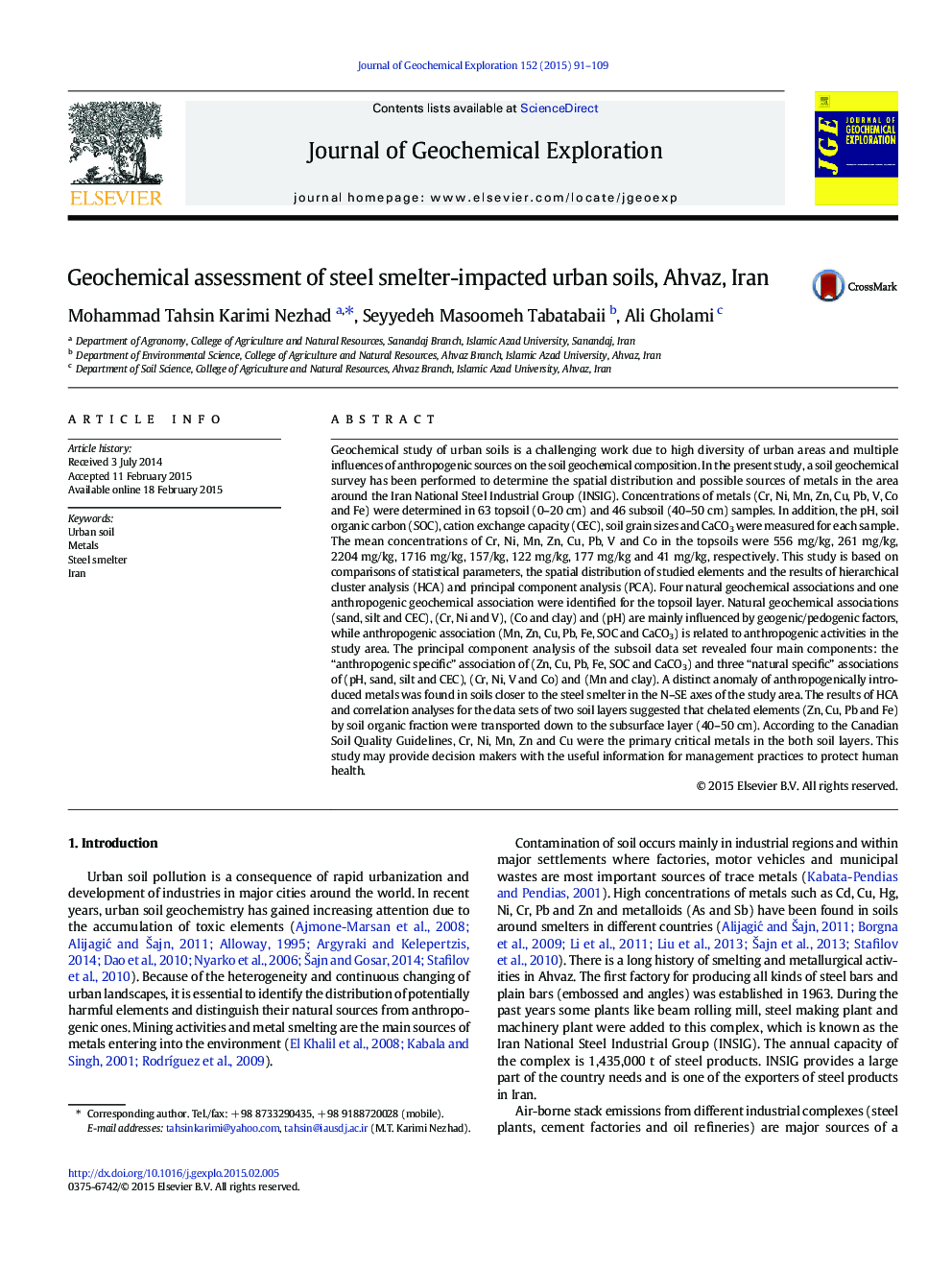| کد مقاله | کد نشریه | سال انتشار | مقاله انگلیسی | نسخه تمام متن |
|---|---|---|---|---|
| 6344622 | 1620907 | 2015 | 19 صفحه PDF | دانلود رایگان |
- A geochemical survey of two soil depths around a steel smelter is presented.
- Possible sources and distribution of studied metals in soils were examined.
- Contaminated land Statutory Guidance refers to high levels of some metals.
- Soil organic fraction has a great influence on metal mobility in studied soils.
Geochemical study of urban soils is a challenging work due to high diversity of urban areas and multiple influences of anthropogenic sources on the soil geochemical composition. In the present study, a soil geochemical survey has been performed to determine the spatial distribution and possible sources of metals in the area around the Iran National Steel Industrial Group (INSIG). Concentrations of metals (Cr, Ni, Mn, Zn, Cu, Pb, V, Co and Fe) were determined in 63 topsoil (0-20Â cm) and 46 subsoil (40-50Â cm) samples. In addition, the pH, soil organic carbon (SOC), cation exchange capacity (CEC), soil grain sizes and CaCO3 were measured for each sample. The mean concentrations of Cr, Ni, Mn, Zn, Cu, Pb, V and Co in the topsoils were 556Â mg/kg, 261Â mg/kg, 2204Â mg/kg, 1716Â mg/kg, 157/kg, 122Â mg/kg, 177Â mg/kg and 41Â mg/kg, respectively. This study is based on comparisons of statistical parameters, the spatial distribution of studied elements and the results of hierarchical cluster analysis (HCA) and principal component analysis (PCA). Four natural geochemical associations and one anthropogenic geochemical association were identified for the topsoil layer. Natural geochemical associations (sand, silt and CEC), (Cr, Ni and V), (Co and clay) and (pH) are mainly influenced by geogenic/pedogenic factors, while anthropogenic association (Mn, Zn, Cu, Pb, Fe, SOC and CaCO3) is related to anthropogenic activities in the study area. The principal component analysis of the subsoil data set revealed four main components: the “anthropogenic specific” association of (Zn, Cu, Pb, Fe, SOC and CaCO3) and three “natural specific” associations of (pH, sand, silt and CEC), (Cr, Ni, V and Co) and (Mn and clay). A distinct anomaly of anthropogenically introduced metals was found in soils closer to the steel smelter in the N-SE axes of the study area. The results of HCA and correlation analyses for the data sets of two soil layers suggested that chelated elements (Zn, Cu, Pb and Fe) by soil organic fraction were transported down to the subsurface layer (40-50Â cm). According to the Canadian Soil Quality Guidelines, Cr, Ni, Mn, Zn and Cu were the primary critical metals in the both soil layers. This study may provide decision makers with the useful information for management practices to protect human health.
Journal: Journal of Geochemical Exploration - Volume 152, May 2015, Pages 91-109
